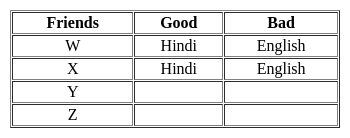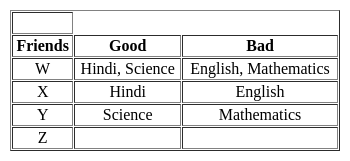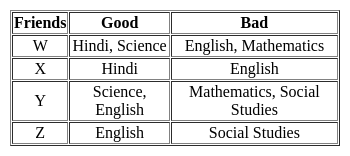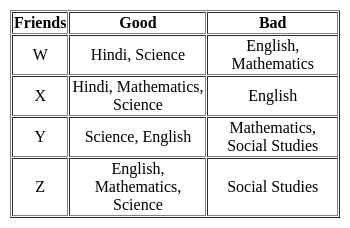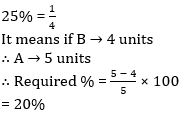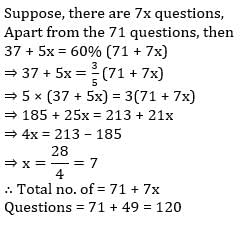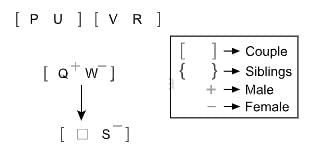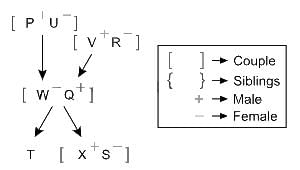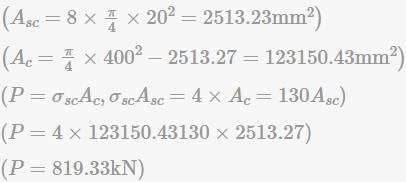MPPGCL JE Civil Mock Test - 4 - Civil Engineering (CE) MCQ
30 Questions MCQ Test - MPPGCL JE Civil Mock Test - 4
Who amongst the following friends is not good in Mathematics but good in Hindi?
LCM of two numbers is 225 and their HCF is 5. If one number is 25, the other number will be?
A’s salary is 25% more than that of B. Then B’s salary is less than that of A by
When did Zimbabwe attain independence and from whom?
A man bought 17 articles for Rs. 480 each, 15 articles for Rs. 600 each and 18 articles for Rs. 900 each. What is the average cost price per article?
Suresh solved 60% of the question in an examination correctly. If out of 71 Questions solved by Suresh, 37 questions are correct and out of remaining every 7 questions, 5 questions have been solved by Suresh correctly. Then find the total number of questions asked in the examination?
Directions: Each of the following consists of a question and two statements numbered I and II given below it. You have to decide whether the data provided in the statements are sufficient to answer the question:
Nine persons P, Q, R, S, T, U, V, W, and X belongs to a family of three generation where only married couples have children.
How is X related to S?
I. P is married to U. V is married to R. Q is the husband of W. S is the daughter-in-law of W.
II. V is the father of Q. U is the mother-in-law of Q. T is the sibling of X. T is unmarried.
Without stoppage, a train travels a certain distance with an average speed of 60 km/h, and withstoppage, it covers the same distance with an average speed of 40 km/h. On an average, howmany minutes per hour does the train stop during the journey?
Pipes R and T together can fill a tank in 40 minutes. If Pipe R alone can fill it in 90 minutes, in how many minutes can Pipe T alone fill it?
For constructing dams and foundation, the type of cement generally used is:
A RC column 4m long and 400mm in dia is reinforced by 8 bar of the 20mm dia, find the safe load, the column can carry, (σsc = 4N/mm2, σse = 130N/mm2)
If the area of tension reinforcement provided is greater than required for a balanced reaction, then the RCC beam is called:
Expansion joints are provided if the length of the concrete structure exceeds -
For cohesive soil, with increasing compactive effort, the optimum moisture content.
The ratio of liquid to plasticity index for a soil mass is called -
The ratio of the volume of voids to the total volume of the soil mass is called -
Directions: the related Word from the given alternatives.
Bird : Wings ∷ Fish : ?
For a routine consolidation (oedometer) test in the laboratory, what is the standard thickness of the specimen?
Consider the following statement: A simply supported beam is subjected to a couple somewhere in the span. It would produce.
1. A rectangular SF diagram
2. Parabolic BM diagrams
3. both + ve and –ve BMs
which are maximum at the point of application of a couple of these statements-
According to IS 456 - 1978, the thickness of reinforced concrete footing on piles at its edge is kept less than-
Estimate the theoretical capacity of a traffic lane with one-way traffic flow at a stream speed of 45 kmph. Assume the average space gap between vehicles to follow the relation Sg = 0.278 Vt where V is the speed in kmph, t is the average reaction time 0.8 sec. Assume the average length of vehicles =5.0 m.
California Bearing Ratio method of designing flexible pavement is more accurate, as it involves-
Plywood is obtained by gluing wooden sheets at a pressure of:
Which of the following ingredients refer to binding materials of mortar?
1- Cement
2- Lime
3- Sand
4- Ashes
Select the correct answer using the code given below.
The hardwood is produced by which of the following trees?
Which of the following defect arise due to seasoning of timber?


